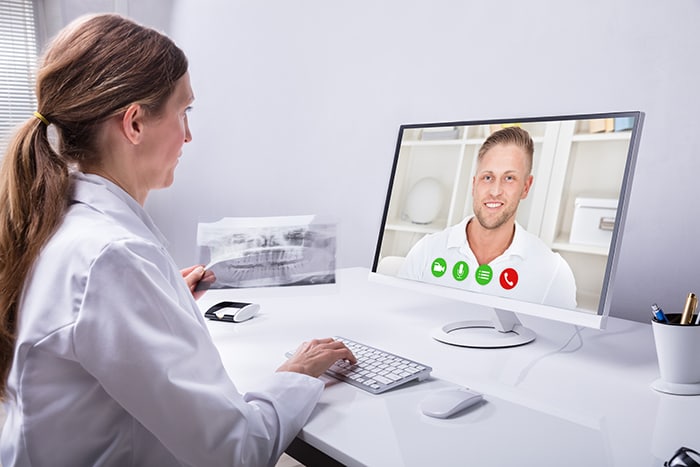With greater remote working during the past year has also come the rise of Teledentistry and Telemedicine.
Teledentistry refers to the use of telehealth, which includes a broad range of technologies used to remotely deliver virtual medical, health, and education services. These technologies can enhance care and education delivery for patients. The pandemic has forced healthcare, including dental care, to evolve in using new communication alternatives and other technologies to help care for patients.
Examples of teledentistry
Live video: a 2-way interaction between a person and provider at the same time (synchronous teledentistry). This can be useful for a virtual consultation or acclimatization visit, which can be particularly helpful for nervous patients.
Transmission of recorded health information such as radiographs, photographs, digital impressions, for example records taken by a dentist wanting a specialist opinion, or from a patient to a dentist to allow for a degree of virtual examination. This is 'store-and-forward' or asynchronous teledentistry.
Recording of personal health data - such as oral health regimes recorded from smart toothbrushes, or information input from apps.
The use of teledentistry for screening individuals, for example inmates.
Delivery of prevention e-Health messages and oral health promotion.
The benefits of teledentistry
Teledentistry can be a great way to engage with patients in a time when face-to-face care has challenges. Technologies can deliver oral health preventative messages, deliver instructions, or acclimatize patients before they arrive at the dental surgery and therefore potentially reduce the time needed in the dental chair. In delivering teledental services, consideration of communication techniques is necessary, such as speech, body language, communication style, the setting, and a collaborative approach.
Patients can also access health care information at times and locations convenient to them and therefore fit into their daily schedules. Having remote access to care also removes barriers in place for some patients who struggle to get to the dental office, such as more rural populations or people who have mobility issues.
Considerations
The American Dental Association and other organizations have guidance or policies on the practice of teledentistry. Practitioners should be aware of the relevant guidance for their area. Some important considerations when providing teledentistry include:
Examinations and subsequent interventions performed using teledentistry must be consistent with how they would be delivered in-person and be based on the same level of information that would be available in an in-person environment
Any treatment must be documented properly
Pathways must be in place for follow-up face-to-face care, as well as urgent care when necessary
Any dentist delivering, directing or supervising teledentistry services must be fully licensed, insured and registered by the relevant body.
Teledentistry is a developing modality and each country will have its own legislative framework. Including teledentistry within your practice can be a differentiator and add value to the dental practice.


Was this article helpful?
If you’d like a response, Contact Us.